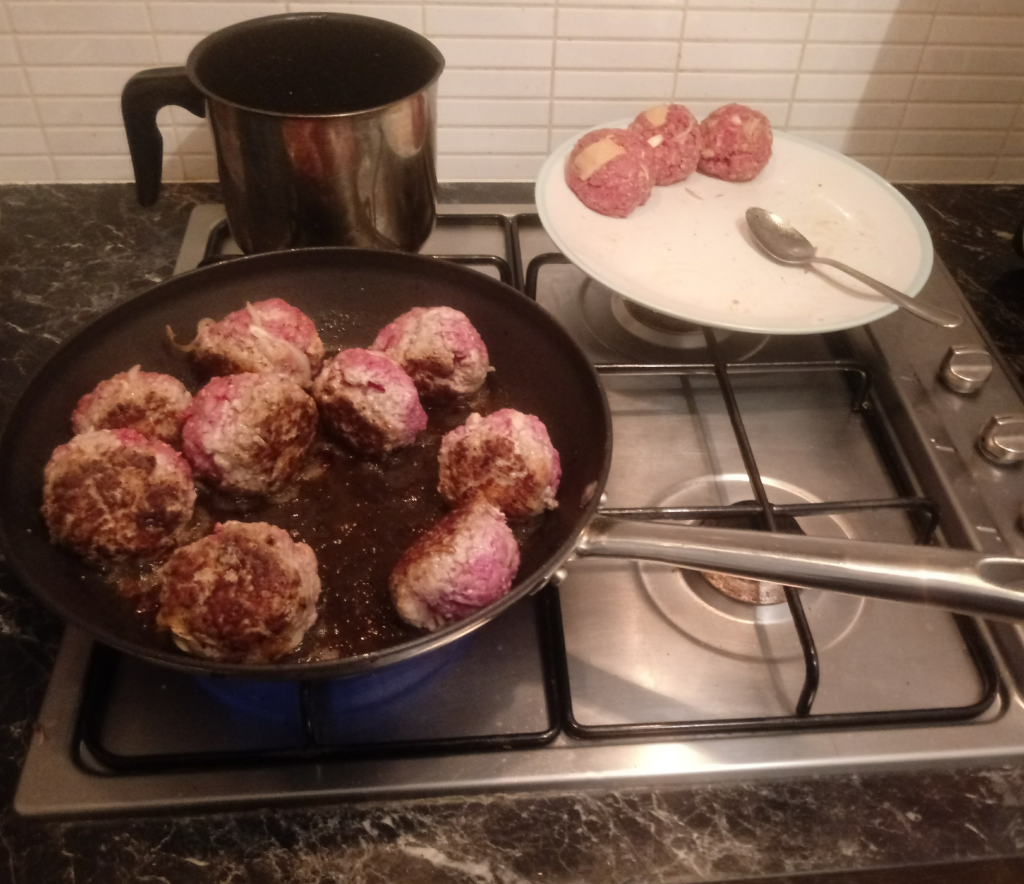
I blog about wildlife and food. Here, I cover a national dish from a different country each time. I then write about the wildlife of that country, and run a scoring system to rate the different recipes. You can find out about it here.
What’s today’s dish? Mămăligă with jumari, which is Moldovan for polenta with pork rind.
Are mămăligă-filled Moldovans any good at looking after the environment? I think so. Moldova’s statement at this month’s COP28 climate gathering was fairly orthodox, but did make the point that it was one of the countries suffering severe effects from global change. Encouragingly, Moldova’s representative was an environmental activist and law specialist – much more appropriate than the career diplomats or fossil fuel chiefs that some other countries sent.
Moldova is a very poor nation in economic terms, but nonetheless offered to preside at COP29 next year to resolve the Russia-EU impasse about Bulgaria hosting the event. This might have been a better idea than awarding COP29 to oil-rich Azerbaijan instead. However, as that’s exactly what happened, we’ll never know.
Some progress is being made on the international environmental scene, but plenty is still being lost. Azerbaijan may be small, but it’s still over twice the size of a Moldova – and, like the UAE (COP28’s host country), has a much worse human rights record. The global power-players have such influence over big decisions that affect millions of human lives on the frontline. It is so often the defenceless who need our prayers and our advocacy.
Thankfully, though, every positive action taken for them can make a difference. And I’ll eat to that.

Recipe: Mamaliga – Global Table Adventure
Substitutions: Couldn’t find coarse yellow cornmeal, so I made this with a mixture of fine yellow cornmeal and a few breadcrumbs. Equally, I substituted hard goats’ cheese in for sheep’s cheese.
Cooking notes: Mămăligă is traditionally cut with string… so, me being me, I used some string left over from our wedding invitations to add to the fun (and look after a small piece of the planet).
Makes: 2 portions for the average adult, as long as not too hungry.
Carbs: 36g carbs per portion, i.e., 72g in total
Rating: 80. Another tasty variation on the ‘cheese and bacon’ theme.








Austria
I write about wildlife and food. This blog covers a national dish from a different country each time. I then write about the wildlife of that country. You can find out about the scoring system used to rate the different recipes here.
What’s cooking today? Tafelspitz is a clear soup of beef and vegetables from Austria.
Austria is home to multiple conservationist friends of mine, which might mean one of them will pop up in an interview before long. More concretely, the last time I came across Austria at work was during Climate COP 28. If I remember rightly, Leonore Gewessler, Federal Minister for Climate Action, gave a compassionate speech asking for a complete fossil fuel phase-out. She also used the speech to announce €35 million of climate contributions. The day after, Austria joined six other European nations in proposing a framework “to prevent greenwashing and restore integrity” in voluntary carbon markets. A positive showing, all in all.
Recipes: Tafelspitz Boiled Beef Recipe – Chef Thomas Sixt and, for the vegetables, German Soup Vegetables (Suppengrün) – The Kitchen Maus
Substitutions: Instead of parsley root and celery, I used celeriac as per the Kitchen Maus recipe.
Cooking notes: Given some confusion over the number of bay leaves to use, I went with 3½.Doing the main veg prep during the first hour’s boiling time will increase your efficiency.
Makes: 4.
Carbs: Pretty much 0, if served just as the soup, meat and vegetables.
Drink with: I cooked and served this with Lobster Shack 2021, a deliciously tangy South African Sauvignon Blanc.
Rating: 80. Another wintry classic that exceeded my expectations.
Thus finishes a very tight Group 6, with Austria and Moldova having to go through to a play-off round of repeat cooking. Hats off to Serbia, though!
Serbia 81
—————–
= Austria 80
= Moldova 80
—————–
Finland 79+
Lithuania 79
Russia 74
Share this:
Leave a comment
Filed under food, News & comment
Tagged as Autriche, Österreich, beef, Birds, boiling, climate, conservation, COP28, environment, food, onion, Oosterrijk, recipes, Sauvignon Blanc, soup, swallows, wildlife, wine